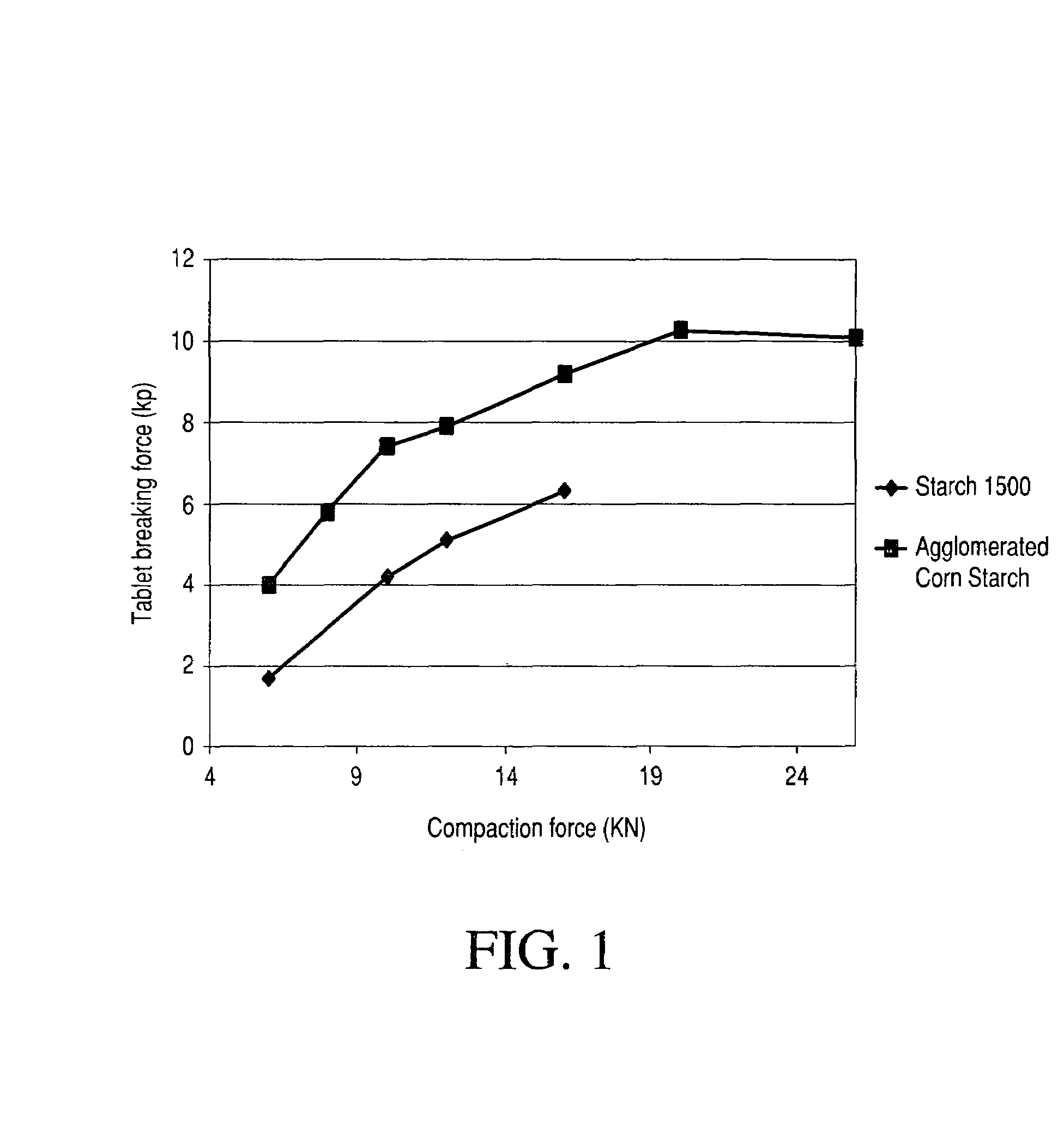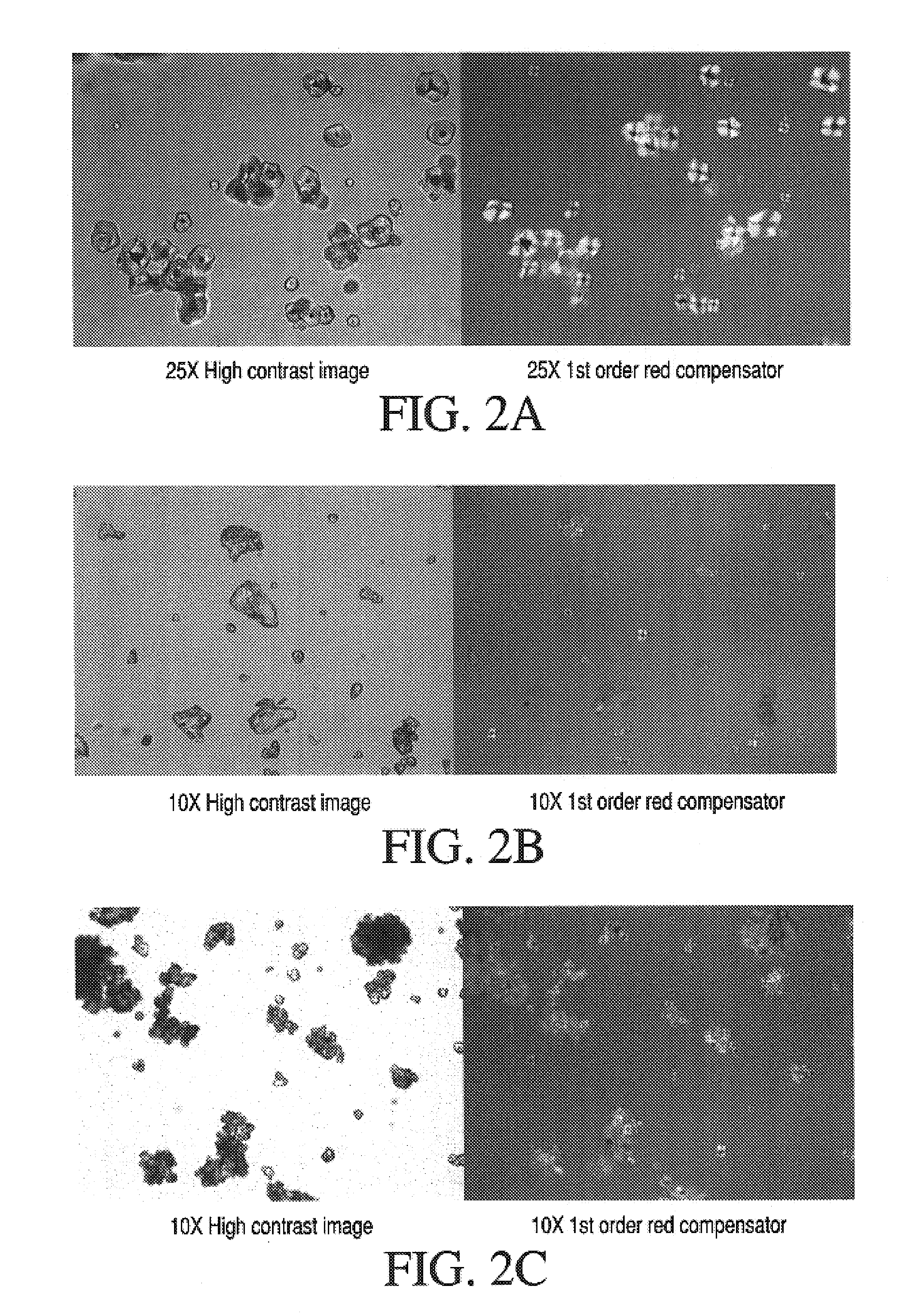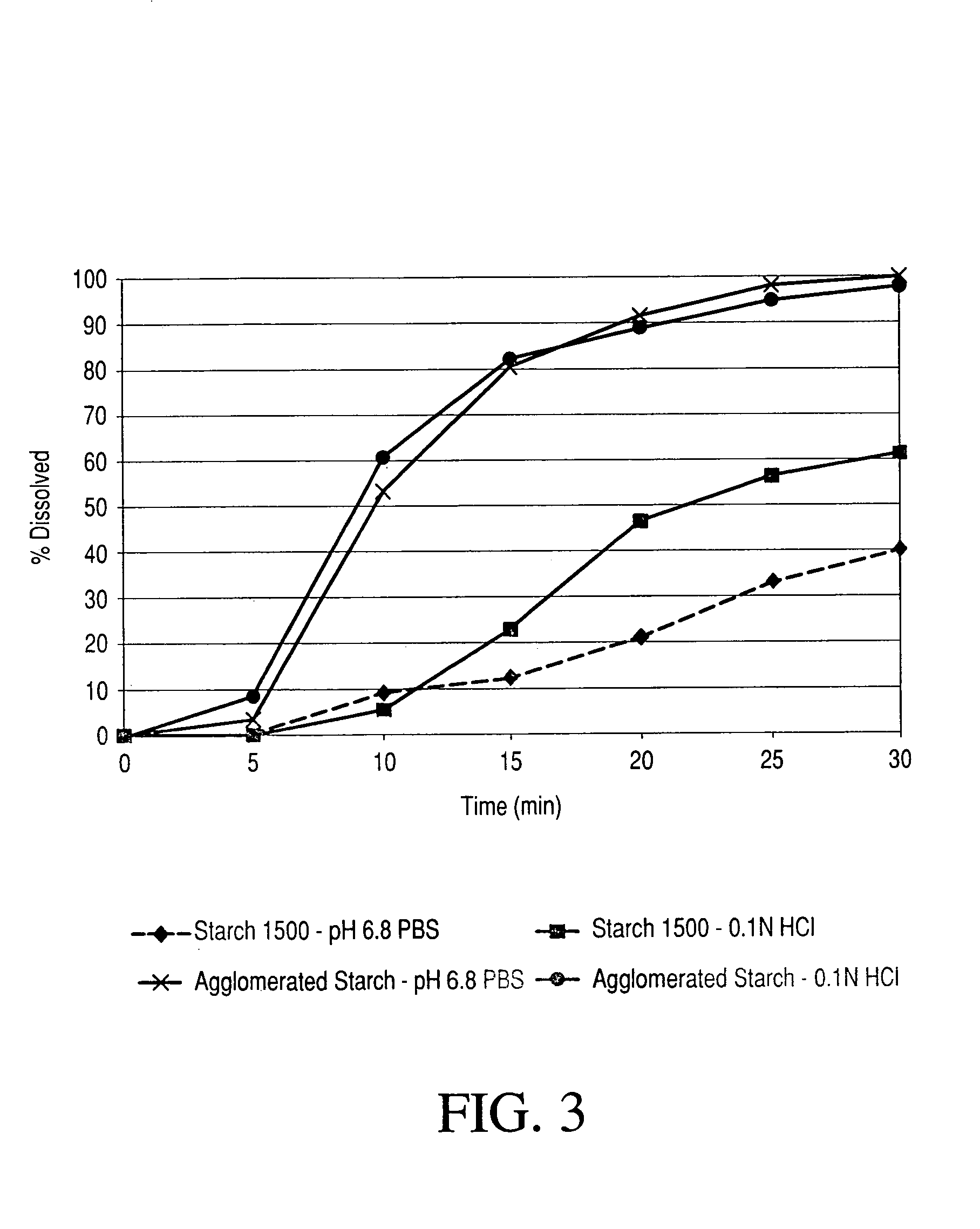Agglomerated starch compositions
a technology of starch and composition, applied in the field of starch composition, can solve the problems of still involved in heating and cooling steps, and achieve the effect of improving flow properties
- Summary
- Abstract
- Description
- Claims
- Application Information
AI Technical Summary
Benefits of technology
Problems solved by technology
Method used
Image
Examples
example 1
Manufacture and Characterization of Agglomerated Corn Starch
[0038]A fluid-bed process (3.0 kg) was used to agglomerate pure corn starch and pre-compacted corn starch powder that was prepared according to the processes described in the '677 and '535 patents (sold as Starch 1500® by Colorcon). The formulation consisted of 85% corn starch (Kingsford starch, a commercially available pure corn starch) and 15% Starch 1500. The agglomeration was performed in a Glatt GPCG-3 fluid bed with top-spray liquid delivery. Along with the entire amount of corn starch, half of the Starch 1500 was placed in the bowl and the remainder was dispersed in water at 10% solids concentration to be used as the binder.
[0039]The inlet temperature was controlled at 60° C. and the spray rate was 60–65 g / min. The resultant bed temperature was 26–28° C. throughout the spray application process. The actual spray time was 35 minutes. Drying was conducted at 70° C. until the bed temperature reached 40° C. (˜12 minutes)...
example 2
[0042]In order to further characterize the differences between native corn starch, pre-compacted corn starch powder (Starch 1500) and the agglomerated starch product, several samples were examined by polarized light microscopy. Native, intact starch grains exhibit a high degree of birefringence under polarized light. The photos shown in FIG. 2 compare the degree of birefringence of native corn starch (A), Starch 1500 (B), and the agglomerated starch (C). All samples were prepped in 1.660 refractive index oil. Starch 1500 in FIG. 2(B) contains both birefringent intact corn starch granules and non-birefringent glassy particles. Both native corn starch in FIG. 2(A) and the agglomerated starch product in FIG. 2(C) show a high percentage of intact granules that are birefringent. The picture of the agglomerated starch product shows that granules remain intact during the agglomeration process.
example 3
Propranolol HCl Capsules Containing Agglomerated Corn Starch
[0043]Hard gelatin capsules (Size 1) were filled with blends of 25% propranolol HCl and 75% of either pre-compacted corn starch (Starch 1500) or the agglomerated corn starch of Example 1. Dissolution testing in FIG. 3 was done in 0.1N HCl (pH 1.2) or pH 6.8 phosphate buffer.
[0044]The capsules filled with the agglomerated corn starch showed very fast release in either the 0.1N HCl or the pH 6.8 phosphate buffer, while the capsules containing Starch 1500 were slower in the acid media and even slower in the pH 6.8 media.
[0045]The capsules containing the agglomerated starch product of Example 1 are much less sensitive to pH than those containing pre-compacted starch powder.
PUM
| Property | Measurement | Unit |
|---|---|---|
| particle size | aaaaa | aaaaa |
| particle size | aaaaa | aaaaa |
| particle size | aaaaa | aaaaa |
Abstract
Description
Claims
Application Information
 Login to View More
Login to View More - R&D
- Intellectual Property
- Life Sciences
- Materials
- Tech Scout
- Unparalleled Data Quality
- Higher Quality Content
- 60% Fewer Hallucinations
Browse by: Latest US Patents, China's latest patents, Technical Efficacy Thesaurus, Application Domain, Technology Topic, Popular Technical Reports.
© 2025 PatSnap. All rights reserved.Legal|Privacy policy|Modern Slavery Act Transparency Statement|Sitemap|About US| Contact US: help@patsnap.com



